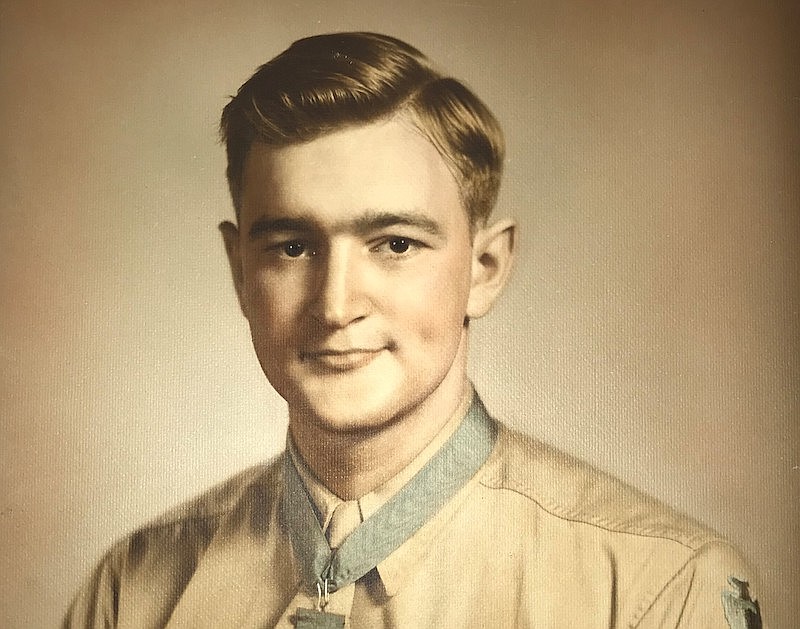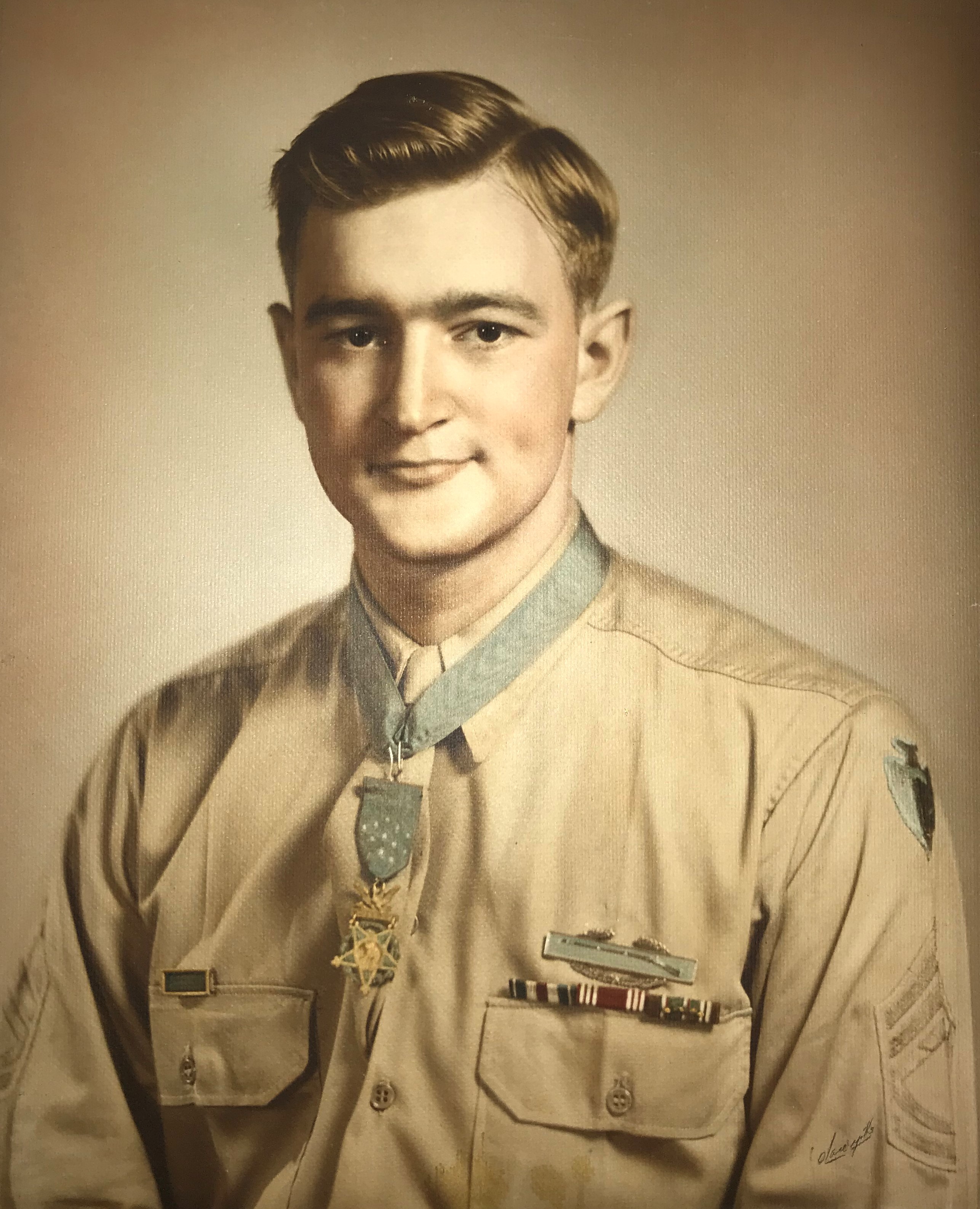For more than 14 months during the Nazi invasion, Charles H. Coolidge Sr. served in Europe, starting with a treacherous boat ride from North Africa to Italy.
After months of firefights, the technical sergeant led a section of heavy machine guns with a platoon of fewer than 30 men to take a position near Hill 623 east of Belmont sur Buttant, France, a crucial position near the German border.
It was Oct. 24, 1944, and 23-year-old Coolidge was by far the most seasoned and experienced soldier in the group. By that time, he had seen months of action while most of the men he was in charge of were fresh-faced and green. He and his unit were setting up two machine guns when they heard the Germans coming.
Coolidge looked to his friend, George Ferguson, from the Bronx, who spoke German.
"George, call to them and ask them if they want to give up," Coolidge said.
(READ MORE: An honor to have the National Medal of Honor Heritage Center in Chattanooga)
The Germans weren't more than 40 feet away when one of them pointed his rifle at Ferguson.
That's when Coolidge raised his rifle and shot, hitting the German who was pointing his rifle at Ferguson.
A firefight led to Ferguson being hit in the left arm, and the battle began.
For four days, with little ammunition, Coolidge and his men survived six counterattacks from the Germans, who were trying to make it up the hill. On the fourth morning, Oct. 27, the Germans brought up two tanks for the seventh counterattack.
"The situation was desperate," Staff Sgt. Clarence B. Hawkins, a leader of a squad of riflemen, later said. "Sgt. Coolidge saw there was at least a company of Germans and something had to be done. He stepped in front of us and walked right at the Germans, yelling to them to surrender. You'd think he had an Army behind him."
Coolidge had already told his men that there was a possibility the Germans would bring a tank through a bank barely wide enough to accommodate one. That morning, as the unit heard the two tanks rumbling up the hill, Coolidge and his men readied their defense.
When the first tank got about 50 feet away from Coolidge, who remained at the front of the unit, a turret of the tank opened up and, in perfect English, the German troops' leader asked, "Do you guys want to give up?"
Coolidge looked him square in the face and said, "I'm sorry, Mac. You've got to come and get me."
With no other reason to keep the conversation going, the German closed the turret and fired an 85 mm gun at Coolidge five times at point-blank range. Coolidge was able to dodge every shot, ducking between and behind trees.
At one point, the shrapnel from a shot cut the leather on the top of his boot, but it didn't break the skin.
Coolidge got hold of a bazooka to return fire, but as Charles Coolidge Jr. explained, the battery in the ignition system was taken out so his father couldn't get it to work. Thankfully, the seasoned soldier always carried "a case of grenades" with him during battle.
Coolidge pitched as many grenades as he could to hold off the Germans from taking the hill. As his men retreated safely, Coolidge made sure he was the last one on the hill.
"My dad was in combat for 14 months at that point," Charles Coolidge Jr. said. "He knew how they played. He took them out."
From later reports as the Allies inched closer to victory, it was reported that Coolidge and his men killed 26 Germans and injured up to 60 others.
Ferguson survived the attack, and he and Coolidge stayed in touch after the war.
What they said
“Today, our city, state, and nation have lost a great American hero with the passing of Charles H. Coolidge. Mr. Coolidge was beloved by all who knew him, and his heroism was legendary. Coolidge was, above all, a model of integrity, honor and determination who is memorialized by a park, a highway, and the many institutions that bear his name. However, his greatest legacy is the hundreds of thousands of lives that he touched during his 99 years on earth.— Noah Long, chairman of the board at the Charles H. Coolidge National Medal of Honor Heritage Center“All free people mourn the loss of this great man. He, along with his fellow service members, saved our Republic during World War II. I pray that we can live up to his magnificent legacy best espoused in the Medal of Honor character traits — patriotism, citizenship, integrity, courage, sacrifice and commitment. These traits were Charles H. Coolidge. May he rest in eternal peace. He earned it.”— B. B. Bell, chairman of the museum’s National Advisory Board“Our country has lost a great American with the passing of Medal of Honor recipient Charles H. Coolidge. He was the embodiment of the Greatest Generation, and his legacy has and will continue to shape the lives of countless people and children in our state and across the country. Many people know Charles Coolidge as an American hero from World War II, but I believe he is much more as his legacy will continue to serve as an inspiration for all of us, today and for the future, on how ordinary people can face and overcome an extraordinary challenge in life. My thoughts and prayers are with the Coolidge family during this difficult time.”— Bill Raines, chairman emeritus, Charles H. Coolidge National Medal of Honor Heritage Center


